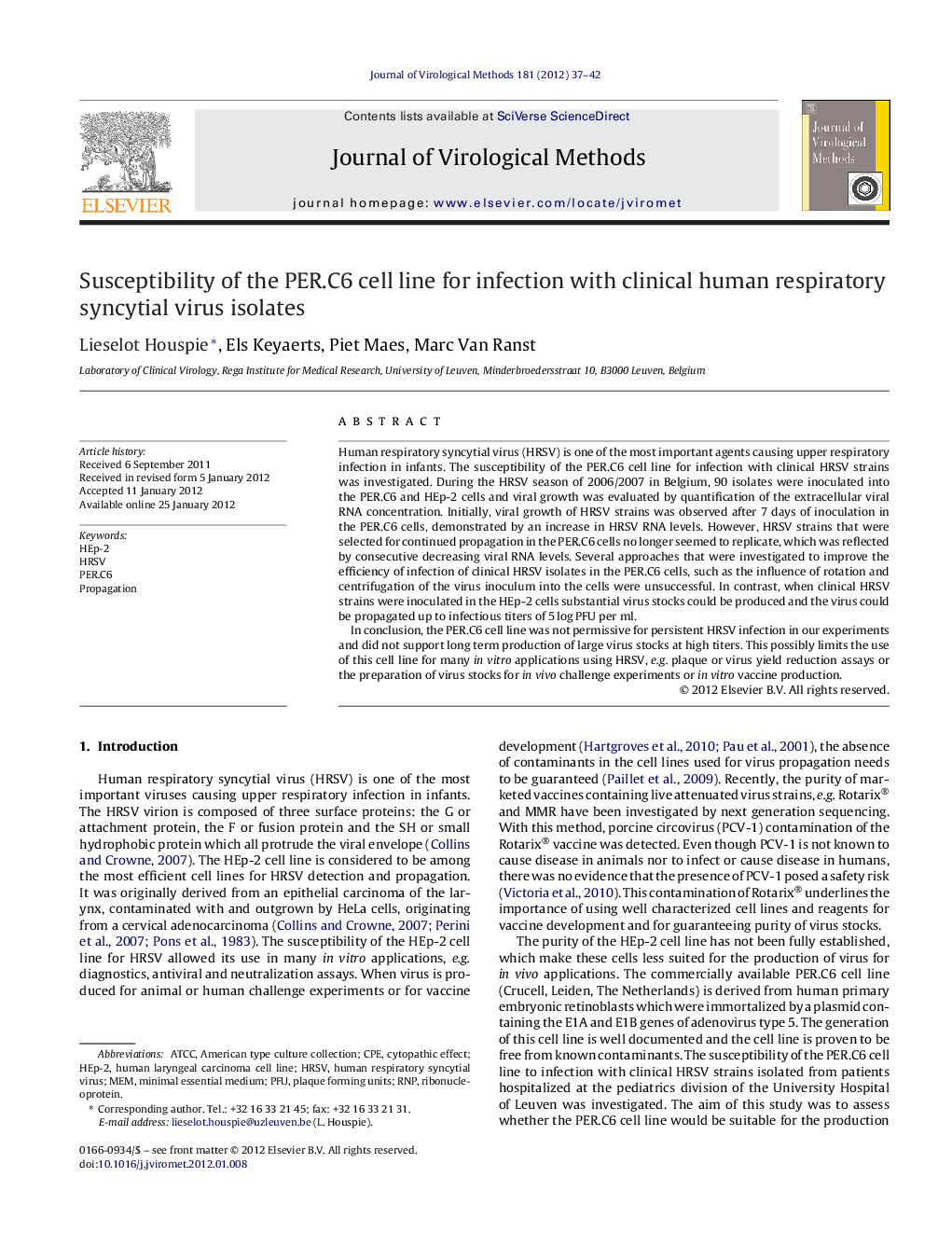| کد مقاله | کد نشریه | سال انتشار | مقاله انگلیسی | نسخه تمام متن |
|---|---|---|---|---|
| 3406716 | 1223588 | 2012 | 6 صفحه PDF | دانلود رایگان |

Human respiratory syncytial virus (HRSV) is one of the most important agents causing upper respiratory infection in infants. The susceptibility of the PER.C6 cell line for infection with clinical HRSV strains was investigated. During the HRSV season of 2006/2007 in Belgium, 90 isolates were inoculated into the PER.C6 and HEp-2 cells and viral growth was evaluated by quantification of the extracellular viral RNA concentration. Initially, viral growth of HRSV strains was observed after 7 days of inoculation in the PER.C6 cells, demonstrated by an increase in HRSV RNA levels. However, HRSV strains that were selected for continued propagation in the PER.C6 cells no longer seemed to replicate, which was reflected by consecutive decreasing viral RNA levels. Several approaches that were investigated to improve the efficiency of infection of clinical HRSV isolates in the PER.C6 cells, such as the influence of rotation and centrifugation of the virus inoculum into the cells were unsuccessful. In contrast, when clinical HRSV strains were inoculated in the HEp-2 cells substantial virus stocks could be produced and the virus could be propagated up to infectious titers of 5 log PFU per ml.In conclusion, the PER.C6 cell line was not permissive for persistent HRSV infection in our experiments and did not support long term production of large virus stocks at high titers. This possibly limits the use of this cell line for many in vitro applications using HRSV, e.g. plaque or virus yield reduction assays or the preparation of virus stocks for in vivo challenge experiments or in vitro vaccine production.
► We investigated the susceptibility of PER.C6 cells for infection with HRSV strains.
► Initial infection was sustained but serial propagation of HRSV was not.
► The inefficient infection did not result from a suboptimal infection procedure.
► Presumably, the release of deficient progeny virus resulted in suboptimal growth.
► The utility of the PER.C6 cells for HRSV propagation or vaccine production is doubtful.
Journal: Journal of Virological Methods - Volume 181, Issue 1, April 2012, Pages 37–42